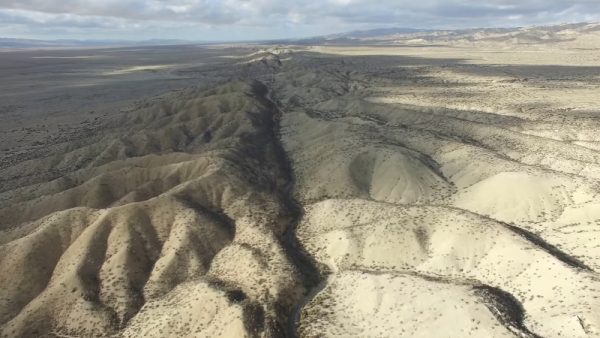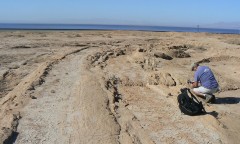By KM Diaz, | April 18, 2017

The San Andreas Fault is considered to be one of the longest fault systems in the world that range around 800 miles through California (1,300 km).
The San Andreas Fault in California continues to slip for 12 years after the magnitude 6 Parkfield earthquake in 2004. Scientists believe that some parts of the fault could be at greater risk of an earthquake than previously assumed.
Afterslip is also known as creeping; it indicates the gradual and slow movements of the land after an earthquake. The movement depends on the fault system which makes it hard to work out on what the long-term damage to infrastructure and buildings will be.
Like Us on Facebook
James Lienkaemper, a geophysicist from the U.S. Geological Survey, and Forrest McFarland of San Francisco State University, analyzed the Parkfield earthquake to obtain better afterslip calculations for other parts of the fault that are expected to rupture. The study published in Bulletin of the Seismological Society of America.
The San Andreas Fault is considered to be one of the longest fault systems in the world that range around 800 miles through California (1,300 km). It traces the boundary of the Pacific and North American plate, and it has the chance to produce huge earthquakes.
One of the parts of the fault in Parkfield earthquake is similar to the Hayward Fault - section San Andreas Fault near San Francisco. The Hayward fault has seen as being at higher risk of creating a strong earthquake because of its creeping fault.
In a previous study of Lienkaemper and McFarland, they discovered that the Hayward fault stored up sufficient energy to produce a 6.8 magnitude earthquake. While in the latest study, they analyzed the afterslip of the Parkfield earthquake and found that 74 percent of the expected afterslip happened within a year of the earthquake, and the afterslip was still incomplete even after six years.
They predicted that the ruptured fault of the afterslip will take about six and 12 years to become complete, and the edges of the fault were likely to continue to slip which only shows that stress was shifted from the central section outward. Understanding the afterslip may help the authorities to plan better improvements to infrastructure, they say.
-
Use of Coronavirus Pandemic Drones Raises Privacy Concerns: Drones Spread Fear, Local Officials Say

-
Coronavirus Hampers The Delivery Of Lockheed Martin F-35 Stealth Fighters For 2020

-
Instagram Speeds Up Plans to Add Account Memorialization Feature Due to COVID-19 Deaths

-
NASA: Perseverance Plans to Bring 'Mars Rock' to Earth in 2031

-
600 Dead And 3,000 In The Hospital as Iranians Believed Drinking High-Concentrations of Alcohol Can Cure The Coronavirus

-
600 Dead And 3,000 In The Hospital as Iranians Believed Drinking High-Concentrations of Alcohol Can Cure The Coronavirus

-
COVID-19: Doctors, Nurses Use Virtual Reality to Learn New Skills in Treating Coronavirus Patients









